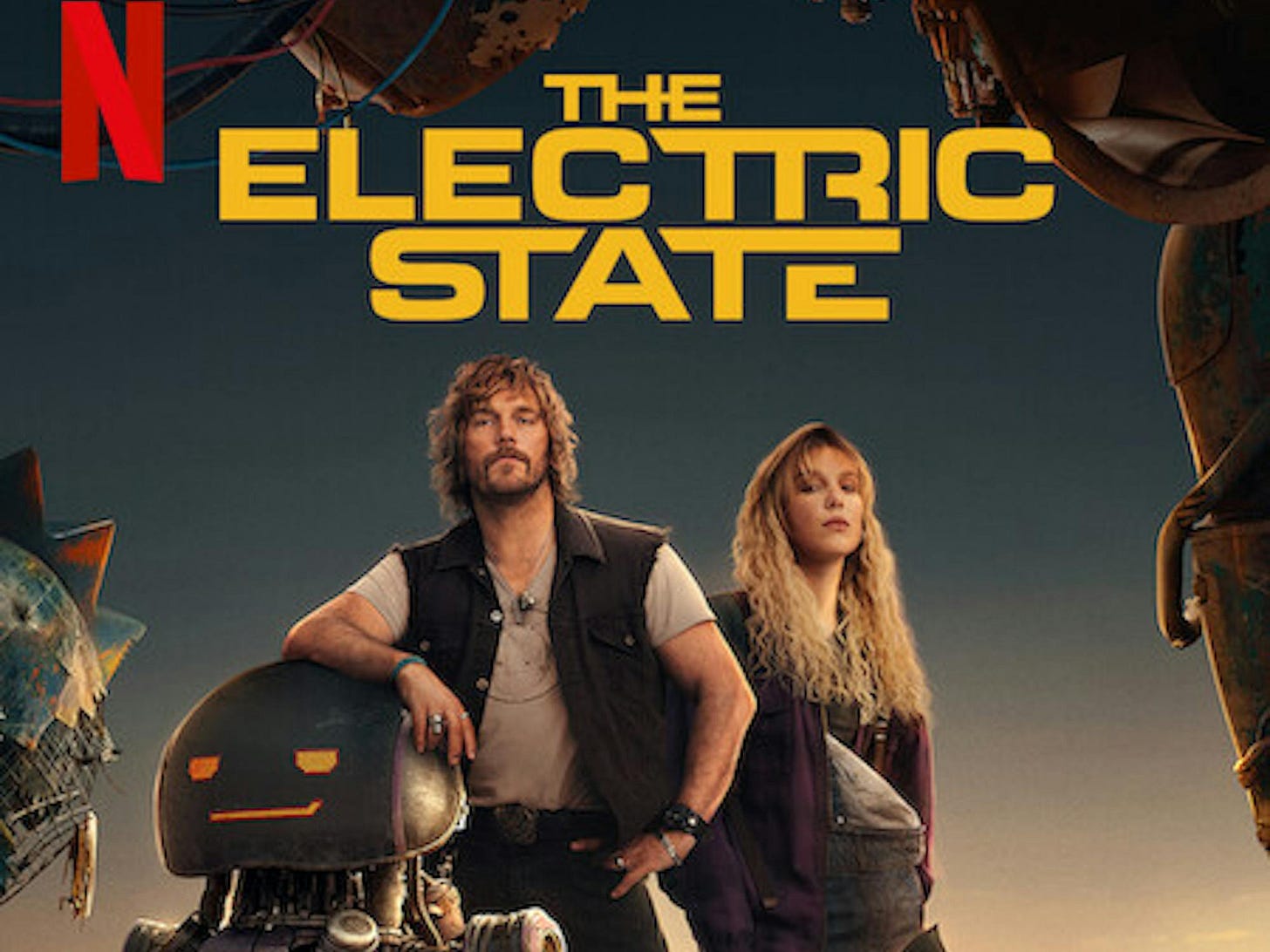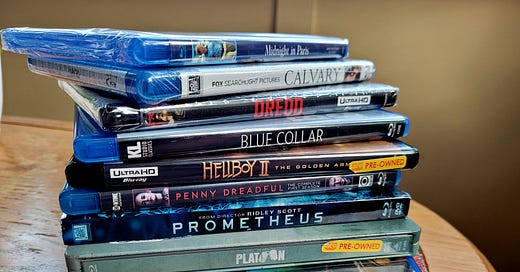Recently, I’ve found a new appreciation for collecting Blu-rays.
To get this out of the way, I don’t believe in permanence. When film bro podcasters rant about collecting and how it allows them to watch a movie “forever,” these declarations are endearing in a naive sort of way.
Things don’t last forever. Discs scratch, consoles break, and, even if your collectibles last as long as you do on earth, they won’t go with you on the next journey. All this to say, my new appreciation for collecting Blu-rays isn’t to fuel the illusion of permanence, but to fend off something equally as ominous as the rust of time…capitalism.
Dun! Dun! DUUNN!
Yes, a writer with absolutely zero qualifications to discuss economic systems is about to add his wad of cash to the burning pile of money that is condemning discourse of the over-commodification of entertainment in our daily lives.
Like everyone else with a TV, I’m subscribed to way too many streaming services than I can keep track of, and I’ve spent way too much time in the black hole of trying to find something to watch, passing literally thousands of options, and ultimately wasting a night to indecision. However, streaming services are kind of a godsend. They let you take risk-free chances on whatever movie or series catches your eye. No longer do you have to put money down on a movie you hope is good, only to have it sit on your shelf for years as a reminder of a poor purchase.
If you’re paying for the subscription anyway, why not take a chance? Netflix, Paramount, and Hulu let us watch thousands of movies and TV shows while taking up absolutely no space in the house, and that’s a luxury that cannot be taken for granted. Sure, we’ve all been in a situation in which we’re finally ready to watch a movie that’s been on our watchlist for months, only for it to disappear from the virtual library, but that’s a first-world problem I’m willing to bare, considering all the luxuries that come with streaming services.
However, the “purity” of subscription services has been tainted over the past year. The integration of ads has been seen across networks, because when one started experimenting with commercialization, this original sin triggered a domino effect of easy revenue-generation. Some streaming services are worse than others. Amazon Prime puts a 3-minute ad at the start and middle of a movie (whoops! that changed yesterday), but otherwise the watching experience is left relatively untouched. Then there’s HBO Max, which crams in an abhorrent 90-second ad every twenty minutes or so, utterly severing a film into fragments of its original form.
At one time, streaming services were a safe haven against commercial interruptions. It’s why cable television lost the war to streaming. For years, Netflix let us watch shows commercial-free. Now, it’s no better than the cable networks it set a trend against.
But people need to make money. No matter what, the arrow on the chart has to rise, consequences be damned. Revenue must be generated, or else the suits on the top floor will make heads roll. This might be a bold suggestion, but perhaps a better way to make money is by being more cost-efficient. Maybe, just maybe, not spending $320 million on piles of trash like Netflix-original film The Electric State is a better way to ensure that revered line on the chart continues in a favorable direction than punishing your subscribers with more ads for the same four products.
Alas, I’m hardly qualified to talk about this subject.

So, my newfound appreciation for collecting Blu-rays stems from a newfound desire to maintain the “purity” of what I’m watching. In a Blu-ray, you’ll find no commercial interruptions, a luxury becoming rarer by the day. The irony of combating one aggressive form of capitalism with another is not lost to me, but at least with Blu-rays, for as long as the disc lasts, the viewing experience will remain the same, completely untampered.
The war between art and corporatization has been lost. Ads flood all forms of entertainment. Even my precious WWE, which prior to its acquisition by TKO maintained an old school mentality of keeping the ring mat “sacred,” is now covered in Prime bottles, Cash App dollar signs, and whatever wacky logo for a get-rich-quick scheme the latest trending influencer is pedaling. It’s getting so bad that the higher-ups of WWE are actively searching for empty space to squeeze in another logo, including on the wrestlers’ ring gear. Our entertainment is being squeezed for every cent its worth, and it’s hard to find a silver lining on the horizon.
So, my affection for physical media doesn’t include a large-scale rebellion to win the war against over-commercialization, but to find a small respite from it. I never see myself having a massive army of Blu-rays, but rather a small collection of my favorite films and TV shows, enjoyed the way they were meant, liberated from corporate interference.
As someone who used to be opposed to collecting, the merits of physical media surpass ad-free viewing experiences. The picture quality on a disc is better than that of streaming services, most of whom charge customers for crisper visuals.
Last year, my friend Tyler took me on my first Blu-ray shopping spree, where I limited myself to two of my all-time favorite films. Later that month, I watched my freshly acquired copy of Mad Max: Fury Road, and the cinematography was crystal clean. The audio boomed as if the engine Immortan Joe’s war-rig ripped right in my ear. It was the closest the film engrossed me since I saw it (twice) in theaters. Perhaps as subscription services become more like cable networks, a rise in popularity of physical media will follow, and I for one will proudly lead that charge.






Welcome to the cult